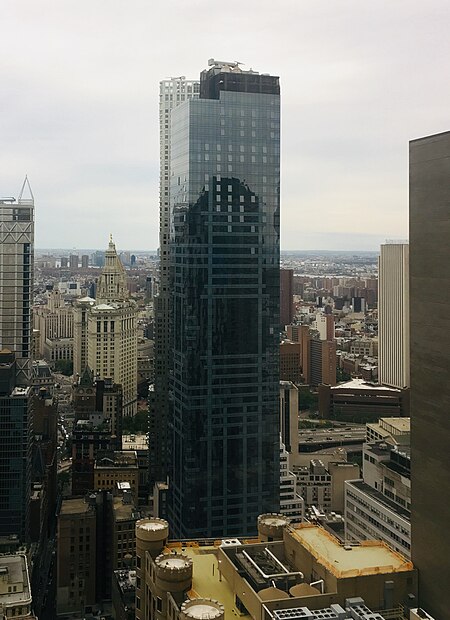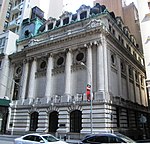19 Dutch
Manhattan building and structure stubsResidential buildings completed in 2019Residential buildings in ManhattanResidential skyscrapers in ManhattanUse mdy dates from August 2019

19 Dutch is a residential building in the Financial District neighborhood of Manhattan, New York City. The building was developed by Carmel Partners and was designed by GK+V, with SLCE Architects as the architect of record. GK+V also designed the nearby 5 Beekman. The building contains 482 units and retail space on the first several floors.
Excerpt from the Wikipedia article 19 Dutch (License: CC BY-SA 3.0, Authors, Images).19 Dutch
Broadway, New York Manhattan
Geographical coordinates (GPS) Address Nearby Places Show on map
Geographical coordinates (GPS)
| Latitude | Longitude |
|---|---|
| N 40.7098 ° | E -74.0096 ° |
Address
Broadway 176
10038 New York, Manhattan
New York, United States
Open on Google Maps










